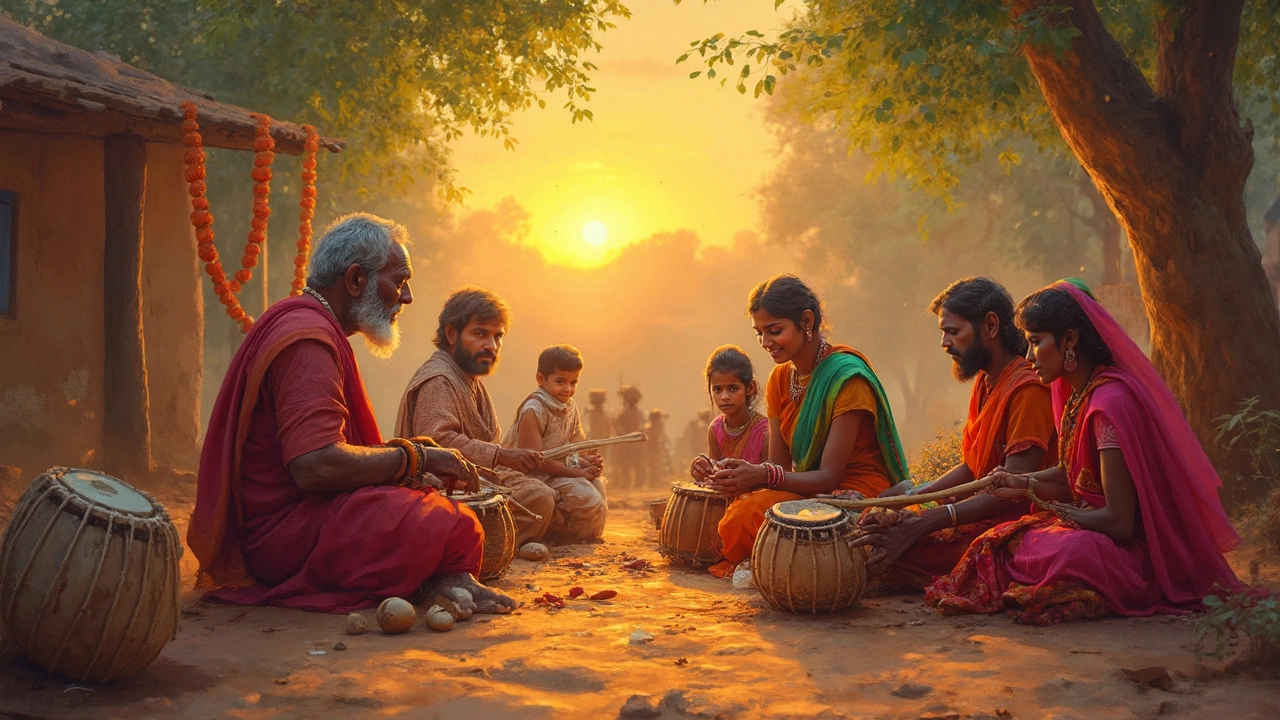
Oldest Folk Music in India: Ancient Traditions, Stories, and Sounds
Travel back to India's ancient roots. Discover the oldest folk music, its origins, stories, and timeless tunes still echoing in villages and celebrations.
When you think of India, you probably picture colorful festivals, spicy food, and bustling markets. But underneath that lively surface lies a network of folk traditions that have been passed down for generations. These customs aren’t museum pieces – they’re living practices that shape daily life in villages, towns, and even big cities. In this guide you’ll get a quick look at the most common folk elements and learn how you can experience them yourself.
Every region has its own folk music style, from the rhythmic beats of Punjab’s bhangra to the soulful ragas of Kerala’s oppana. The instruments are simple – dhol, ektara, bamboo flutes – but the energy is huge. If you’re traveling, pop into a local mela (fair) and ask for a performance; you’ll usually find a group of youngsters playing on a makeshift stage. The songs often tell stories about harvest, love, or heroic deeds, so you’re hearing history in real time.
Dance follows the same pattern. Folk dances like Garba in Gujarat, Bhangra in the north, and Lavani in Maharashtra are all community affairs. They involve circular movements, clapping, and lots of footwork. The best way to learn is to join in. Most fairs have a “participate” sign, and locals love teaching outsiders a few steps. No formal training needed – just follow the rhythm and smile.
Beyond music, Indian folk traditions shine in rituals and crafts. Take the Pushkar Camel Fair in Rajasthan – a perfect mix of trade, prayer, and entertainment. While tourists snap photos of camels, locals perform traditional dances, sell handmade textiles, and offer prayers to the sacred lake. It’s a great snapshot of how commerce and culture intertwine.
Handicrafts are another pillar. From Madhubani painting in Bihar to Phulkari embroidery in Punjab, each art form carries symbols that mean something to the community. If you buy a piece, ask the artisan about the motifs; you’ll get a story about harvest cycles, local legends, or family lineage.
Even everyday clothing reflects folk roots. Traditional outfits like the saree, kurta, or salwar‑kameez often feature regional prints and weaving techniques. When you attend a local wedding, you’ll notice the bride’s lehenga is hand‑woven, and the groom’s sherwani may have embroidery that tells a tribal tale. Wearing these garments isn’t just about fashion – it’s an act of respect for the craft.
Food also plays a role. Street dishes such as Gujarat’s dhokla or Rajasthan’s dal‑baati are more than snacks; they’re tied to seasonal festivals and farming calendars. Trying these foods on the spot lets you taste the rhythm of the harvest.
So how can you tap into these traditions without traveling far? Start with your community – many Indian neighborhoods host cultural nights, folk music concerts, or dance workshops. Look for events titled “Cultural Tourism in India” or “Traditional Indian Clothing” on local calendars. Even online tutorials can teach you a basic Garba step or a simple folk drum pattern.
Remember, folk traditions thrive on participation. The moment you sing a chorus, learn a dance move, or wear a locally woven garment, you become part of the story. Keep an eye out for festivals, visit local markets, and don’t be shy about asking questions. Those simple actions keep the folk heartbeat alive for generations to come.

Travel back to India's ancient roots. Discover the oldest folk music, its origins, stories, and timeless tunes still echoing in villages and celebrations.